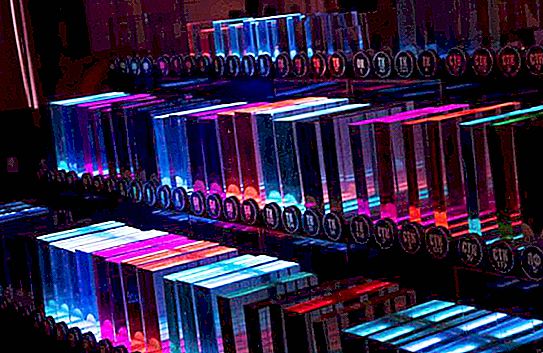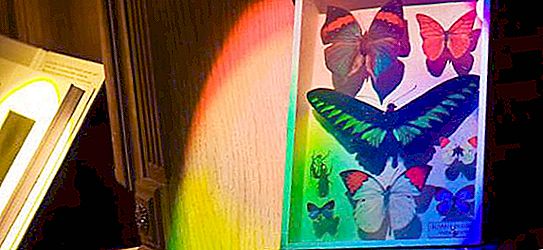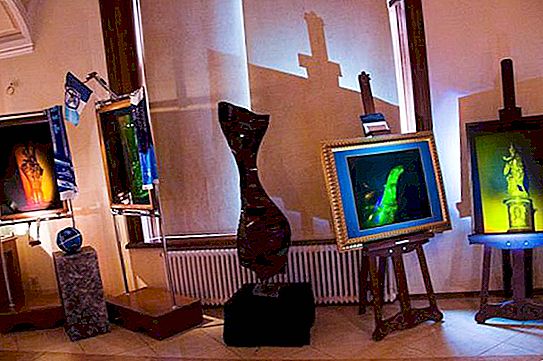On the ground floor of the historical house of the merchant Eliseev in St. Petersburg, the Optus Optics Museum has been operating for several years. It was created with the aim of popularizing science and stimulating the further study of optics. The museum consists of several rooms. Each of them contains many interesting exhibits, which are physical devices, as well as original installations.
Hall of Modern Holography
This part of the museum’s exposition presents the achievements of science in the field of optical clones. Thirteen jewelry masterpieces of the masters of the famous Faberge factory were chosen as objects for creating ultra-realistic holograms. The optoclones of these works of decorative art were very successful at the Magic of Light exhibition. They are full-color visual images that are easy to mistake for a real subject.
In 2015, this collection of optical clones of works of art that are on display at the Feberger Museum in St. Petersburg received the BEST OF YEAR international prize.
In the hall of modern holography, visitors will also see digital optical clones. These amazing works of scientific thought, created by employees of ITMO University, in the near future can open up incredible possibilities for using holography in various areas of our life. After all, today in many museums in the world you can find hydro-optic clones, and during the concerts of superstars of the world show business, their visual counterparts have been dancing along with them for a long time.
Hall of the History of Holography
The Museum of Optics in St. Petersburg invites its visitors to get acquainted with the origins of technology that allows you to create optical clones.
They learn that the creation of holographic images is based on the ideas of the Hungarian physicist Denis Gabor, put forward by him back in 1948. In order for them to be implemented, it took more than 15 years. Only the invention of lasers, which are sources of coherent and monochromatic radiation, allowed us to start developing a method for registering 3D images. It was proposed by academician of the RAS Yu. Denisyuk.
Glass hall
Those who visit the Optics Museum in St. Petersburg will also be able to make a kind of journey back centuries. On the end wall of the Glass Hall there is a panorama telling how the ancient glass-makers worked. The main exhibit of this part of the exposition is the Abbe catalog. It is a collection consisting of 144 samples of optical glasses, assembled under the guidance of academician G.T. Petrovsky. This collection has no analogues and is the pride of the museum.
Another interesting object that is located in the Glass Hall is a computer kiosk, which has a touch screen for visualizing the Abbe diagram. In addition, there you can see the necessary materials (lime, quartz sand, lead oxide, soda, lithium oxide) and a glass melting kit consisting of a crucible and a stirrer.
Tesla Balls Hall
The Optics Museum in St. Petersburg is the place where everyone can see nearby how lightning is born. "Plasma balls" were invented by Nikola Tesla. They were later upgraded by Bill Parquet.
A plasma ball is a glass sphere within which an electrode is located. High voltage is applied to it. As a result of physical processes, the ball is filled with multi-colored lightning.
In the hall where the Tesla Balls are on display, visitors will also see unusual walls. On them you can draw with light, as well as photograph your “frozen” shadow, which is displayed on a surface covered with a special composition.
Ultraviolet hall
The Optics Museum in St. Petersburg provides an opportunity to observe the phenomenon of luminescence. It consists in the nonequilibrium glow of certain substances under the influence of ultraviolet radiation. In the hall dedicated to this type of radiation, visitors can:
- listen to a mini-lecture by the guide, who in an understandable language will tell about the features of certain optical phenomena;
- check your banknotes for authenticity using a special UV emitter;
- draw luminous paintings;
- learn to distinguish harmless luminescent paints from phosphorescent ones.
Playroom
The Optics Museum in St. Petersburg, the photo of the halls of which is presented above, is worth a visit with the children, who are waiting for a lot of surprises. In particular, in the game room they will be offered:
- play familiar tunes on a laser harp;
- create beautiful phantom ornaments by rotating kaleidoscopes of various designs;
- see yourself from all sides in the amazing octagonal mirror hall;
- draw your profile sitting on a shadow chair;
- play a stroboscopic balalaika with a fingerboard, etc.
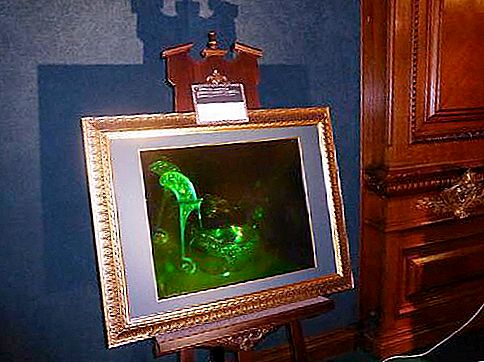
Exhibitions
In addition to the permanent exhibition, the ITMO Optics Museum in St. Petersburg constantly organizes interesting exhibitions.
Light Alive
At the beginning of summer, everyone at the Museum of Optics will be able to see incredible lighting effects and even learn how to create them yourself.
Spectators will be able to walk through 11 halls, where 500 square meters. m located a real magical kingdom. They will make sure that the light is alive, and will be able to penetrate the secrets of optics.
The Light Alive exhibition is divided into several thematic zones, one of which is devoted to holography, which is one of the most amazing achievements of physics.
Magic of light. Lite
The aim of this exhibition is to popularize physics through entertainment and game forms. Its exposition consists of 4 thematic zones. Among them, the interactive play of light game is of particular interest. There, anyone can experiment with plasma balls or “draw” any object with a laser.
It will be no less interesting to visit the “Magic Forest”. It is a corridor where light strings “grow” densely. They create the optical illusion of being in a real forest thicket.
Further visitors will be waiting in the "Alice's Room". There they will have the opportunity for some time to visit the place of inhabitants of Wonderland, where everything is not at all what it seems.
However, the most interesting is waiting for the guests of the Magic of light exhibition. Lite in the Oculus Rift zone. There they can immerse themselves in the world of virtual reality: take a walk with dinosaurs, take a space tour, ride dizzying rides, etc.
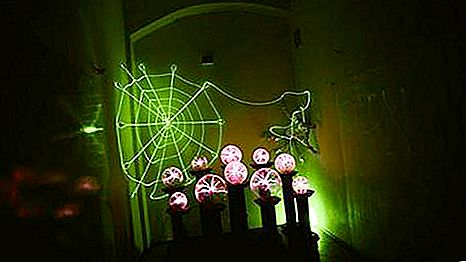
Museum of Optics in St. Petersburg: how to get there and working hours
You can see miracles that are just optical illusions on any day of the week except Monday.
From Tuesday to Thursday, the museum is open from 11:00 to 20:00, and on Friday and on weekends from 11:00 to 21:00.
The Optics Museum in St. Petersburg (address: 14 Birzhevaya Line) is easy to get to. To do this, you can choose a route by metro: get to the stations "Sportivnaya 2" or "Vasileostrovskaya". In addition, it can be reached by ground transport (stops "University" or "Exchange Square").
